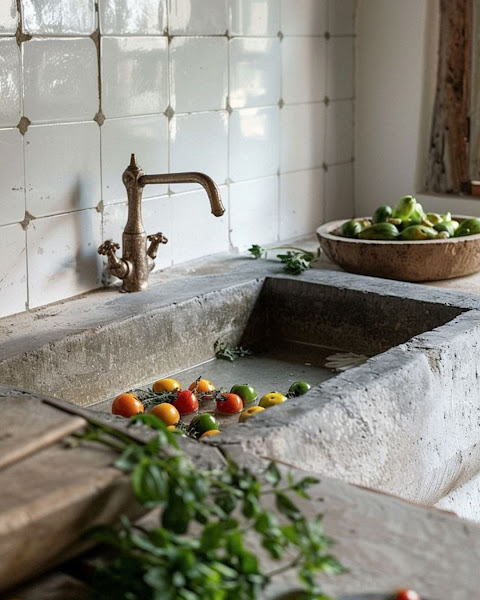The Essence of Wabi-Sabi Italian Style
——Showcasing the serene, poetic home of Cy Twombly in Bassano——
a masterpiece blending Italian grandeur with the Japanese philosophy of wabi-sabi. Let's explore how ancient Italian villas can embody a harmony of decay and refinement while getting infused with the antique reclaimed and worned stone, earth and wood elements of Phoenician and Monolithic Stone.
This blog post delves into a recent project where we've furnished a centuries-old villa with jaw dropping antique stone architectural elements, weaving together the rustic soul of Italy and the quiet grace of Japanese wabi-sabi.
Wabi-sabi, or the art of finding beauty in imperfection and transience, finds an unexpected kinship with Italy’s weathered villas. Think sun-bleached stone, cracked terracotta floors, and patinaed frescoes—elements that tell stories of time’s passage.
Cy Twombly’s home, a minimalist yet emotive space filled with art and raw textures, mirrors this philosophy. Here, we’ve channeled that spirit by juxtaposing the villa’s raw architectural bones (reclaimed stone columns, weathered limestone archways) with curated simplicity.
Materials: Stone, Wood, Iron, Terracotta and the Poetry of Decay
Antique Stone: We sourced 17th-century limestone fireplaces and stone hand carved door surrounds, their cracks and lichen stains adhere to the spirit of Wabi-Sabi like nothing else could...
Weathered Wood: Rough-hewn oak beams and timeworn furniture echo the Japanese concept of sabi (the beauty of aging).
Textural Contrasts: Smooth plaster walls meet rough stone, much like Twombly’s juxtaposition of bold brushstrokes and empty space.
Design Elements: Imperfection as Intention, let time turn the heat up on this design soup.
Negative Space: Empty alcoves highlight singular artifacts—a chipped Roman urn or a lone Pierre Jeanneret chair.
Asymmetry: A crooked staircase becomes a focal point, echoing wabi-sabi’s rejection of rigid perfection.
Natural Light: Filtered through linen curtains, light dances on uneven stone floors, embracing shadows as part of the design.
In this villa, we placed a fragmented stone reliefs against a bare wall, allowing its incomplete edges to evoke emotion. Mid-century modernist pieces (a nod to Charlotte Perriand) sit beside ancient fragments, bridging eras in quiet dialogue.
We Embrace the Wabi-Sabi Italian Style by Celebrate local Flaws Letting that cracked marble tabletop shine something you don't nessecary see in Japanese Wabi-Sabi.
Mixing Eras like the Pair a 19th-century Tuscan bench with a sleek Nordic lamp.
This villa is a love letter to the marriage of Italian dolce vita and wabi-sabi’s tranquil austerity.
Like Twombly’s Bassano retreat, it proves that beauty lies not in pristine perfection, but in layers of history, texture, and soul. As you scroll through the images below, notice the cracks, the shadows, the quiet spaces—each a testament to a life well-lived.
Thanks, Joseph Sage
Founder and Owner at Phoenician Stone
For more information visit us at : www.MonolithicStone.com
or call us directly at: (949) 759-6944
Instagram: @MonolithicStone












































































Comments
Post a Comment